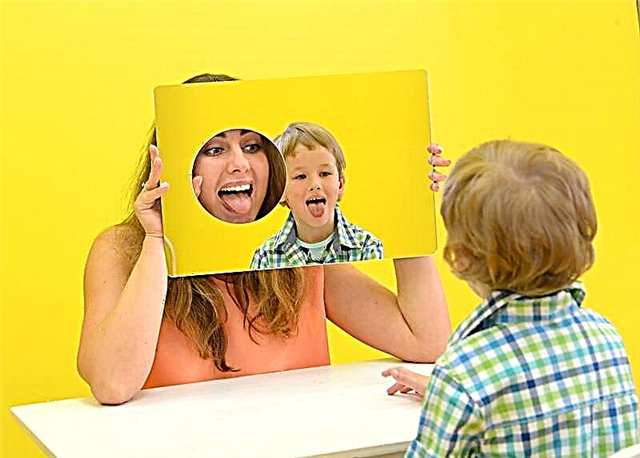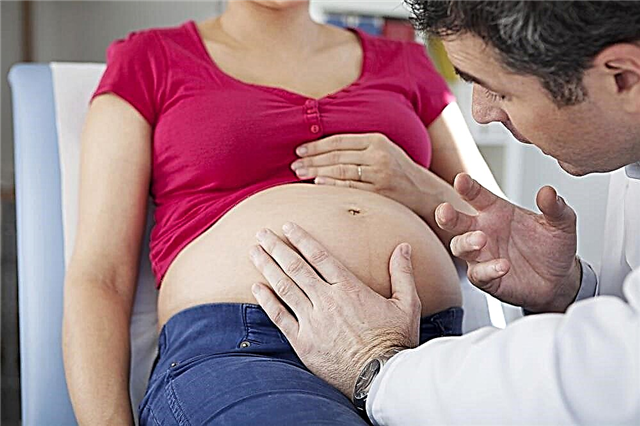When asked by mothers about the age at which babies are teething, pediatricians usually answer that this moment is individual for each child. Teething time can depend on various reasons: genetics, nutrition, climate, crumbs diseases. The usual period is considered to be five to six months. Therefore, parents are always worried if a baby's teeth appear at 2 months, as they believe that this is too early age.

Genetic factors can influence the timing of teething
The period of the appearance of teeth in children
According to modern dentists, the timing of the appearance of teeth in a child does not have a significant effect on their subsequent condition, therefore it does not matter in what age period they appear.
However, the traditional norm is still relevant, a shift in terms in one direction or another is considered a deviation from it. Therefore, it is useful for parents to know the generally accepted indicators of the rate of the appearance of teeth in an infant:
- The first central lower incisors are cut at 6-8 months;
- The eruption of the central upper incisors falls on a period of 7-9 months;
- Lateral incisors on the lower and upper jaws, the period of appearance is approximately 9-12 months.
Duration of incisor appearance
Experts explain that the full formation of the milk dentition is usually completed by the age of three. Recently, however, there has been a shift towards earlier dates of appearance and completion. Therefore, the "dental" process can begin at 2 months, and end by 2 years.
Observations of pediatricians-practitioners of newborn children made it possible to create a real table of the duration of the appearance of dentition. According to the data obtained, the first teeth in a baby usually climb at the age of about 5-6 months. By the time a child is one year old, they usually have about 8 teeth. Then the second wave of eruption begins, and by the age of three, there are ten teeth on the upper and lower jaws.
Note! Dentists have developed a special formula that helps to calculate the required number of teeth according to the baby's age: N = n - 4, where N is the number of teeth erupted, and n is the monthly age.
Teething symptoms
According to pediatricians, it is impossible to miss the moment when the child's first incisors are cut. Any mother will pay attention to the symptoms of atypical baby behavior. Doctors distinguish among other signs the most pronounced:
- An increase in temperature often appears at a time of crisis and accompanies the appearance of a tooth. As a rule, it is slight, about 37 degrees or slightly higher. However, if the temperature rises to 39 °, this may be a sign of a viral infection;
- Swelling of the gums accompanied by redness is the most common symptom. He points to the imminent appearance of the "milkman". The process of swelling occurs due to the fact that, preparing the "site" for the first tooth, the gums become soft, with obvious tubercles, on which sharp edges are sometimes visible or felt. Themselves reddened gums with bruises, very painful;

Profuse salivation is a characteristic sign of teething in an infant
- Profuse salivation is a clear indicator of the imminent appearance of the first incisors. It happens that drooling flows already from 2-3 months, as a reaction to early eruption of the dentition. Especially profuse salivation occurs between the fifth and seventh months;
- A runny nose and cough are symptoms that are sometimes perceived by mom as signs of a cold. In this case, they are caused by mucus running down the back of the throat. When the upper row erupts, the symptoms of nasal congestion are especially severe;
- Inexperienced parents are frightened by changes in the behavior of the baby, who becomes restless, irritable. Poor sleep and appetite are observed, the baby often wakes up and cries in his sleep;
- Sometimes an upset gastrointestinal tract is mixed with restless behavior, manifested in loose stools or, conversely, constipation. This can confuse the mother, forcing her to look for the cause of the diarrhea in the inaccuracies of the baby's nutrition. Gastrointestinal disorders in the "dental" period should alert parents, as they may indicate the addition of infection to the eruption process and threaten the child with dehydration;
- An alarming symptom during this period is vomiting. Only a pediatrician should determine whether it is associated with the first teeth or ARVI;
- A rash may form in the mouth and cheeks of the crumbs due to profuse drooling. This symptom should not scare the mother, it is just necessary to strengthen the hygiene of the face and oral cavity in the baby. However, a rash in other places should not be ignored and become a reason for contacting a pediatrician.
Is teething possible at 2 months
For many mums and dads, it comes as a surprise that a white, sharp strip appears on the gums of a baby at the age of two months. However, experts, answering the question of whether babies can cut their teeth at 2 months, argue that the early eruption of milk jugs is increasingly common in modern babies.
Explanations:
- Pediatricians call acceleration one of the reasons for this early phenomenon. The realities of life are such that children grow and develop much faster than their peers in the past;
- Earlier eruption can be influenced by a genetic factor. If the parents' teeth appeared earlier than the due date, then their child will definitely repeat the family "tradition". Therefore, it is easier for such parents to relate to the explanation of dentists whether a child's teeth can climb at 2 months;

Nutritional features of a mother during pregnancy can contribute to early teething in an infant
- The course of the mother's pregnancy and her nutrition affect the timing of eruption, since it is the mother's body that supplies the unborn child with the substances necessary for the formation of dental germs;
- Most experts come to the conclusion that in children born in areas with a warm climate, the process of the appearance of the first incisors occurs earlier than in babies living in cold climates. This phenomenon is explained by the fact that in sunny areas in the child's body, vitamin D is more actively produced, which accelerates the absorption of calcium;
- Pediatricians, on the basis of many years of observation, are convinced that girls' teeth erupt much earlier than boys.
Cause for concern
If teeth are teething at 2 months, the symptoms can be overlooked and learn about the first teeth of the child quite by accident. Not all of the typical symptoms are prominent in infants. If the child develops nervousness, diarrhea or vomiting, the temperature rises, and the mother does not find any reason, you need to see a doctor. Only then can you understand whether a particular child can have teeth cut at 2 months.
Note! The formation of dental follicles occurs before the birth of the baby, at 5-7 weeks of intrauterine development. If a pregnant woman takes vitamins or foods with a high calcium content at this moment, then the newborn does not experience a lack of trace elements and is born with already formed tooth buds, almost ready to come out.
However, in comparison with the normative indicators, “milkmen” at 2 months are considered too early. Therefore, it is useful to examine the baby, since the cause may be an endocrine disease or a violation of the metabolism of phosphorus and calcium in the child's body. Especially should be alarmed by the fact that several teeth came out at once at such an early age.
Facilitate teething in a 2 month old baby
Experienced mothers know that babies experience pain and discomfort when teething. It is especially sad that the whole family suffers from this, the baby becomes whiny, does not sleep well and refuses to eat. Then you have to turn to the pediatrician for advice. He offers different methods of help, ranging from medicines to folk remedies.

A child experiences discomfort when teething
The most popular are:
- Gum treatment with baby gels with anesthetic effect. They are convenient to use and are suitable for very young children; they can be used even if two or three-month-old babies are teething;
- If teething is accompanied by a fever, the pediatrician will most likely prescribe antipyretic drugs for children, which simultaneously relieve pain and lower the temperature. They are permissible for babies from three months, since some "early" babies have their teeth already in 2-3 months;
- Sometimes doctors, for a number of reasons, offer folk remedies that were used by grandmothers: applying a cold spoon or a tampon soaked in water to the gums of a baby;
- Indispensable for pain relief is a teether toy that an adult himself holds in his hand for a two-month-old baby.
The task of the parents during the teething of the first "milkmen" is to eliminate the discomfort in the child. Pediatricians remind that this can be done not only with the help of medicines, but also through good care, cleanliness and hygiene. For example, give plenty of fluids to stay hydrated, and regularly lubricate the skin on the cheeks, chin and neck with baby cream for a rash.
The teething process depletes the baby's strength, so additional loads must be excluded. By using an upright position that allows blood to flow out, you can relieve pain in the gums.
Important! The symptoms of teething are similar to those of infectious diseases. Therefore, before giving any medication to the baby, you should see a doctor who will prescribe treatment in accordance with the age and physiological characteristics of the child.

Teething toys help relieve baby's teething condition
Parents should not be intimidated by the characteristic "dental" symptoms. They should direct their forces to help the child, alleviating his suffering.
Remember! Following the recommendations of specialists will help the whole family get through this difficult period.



